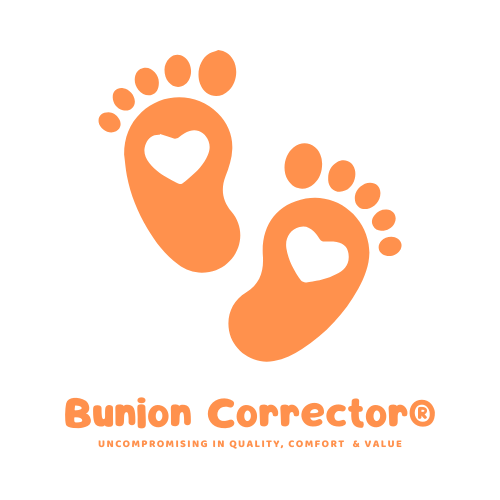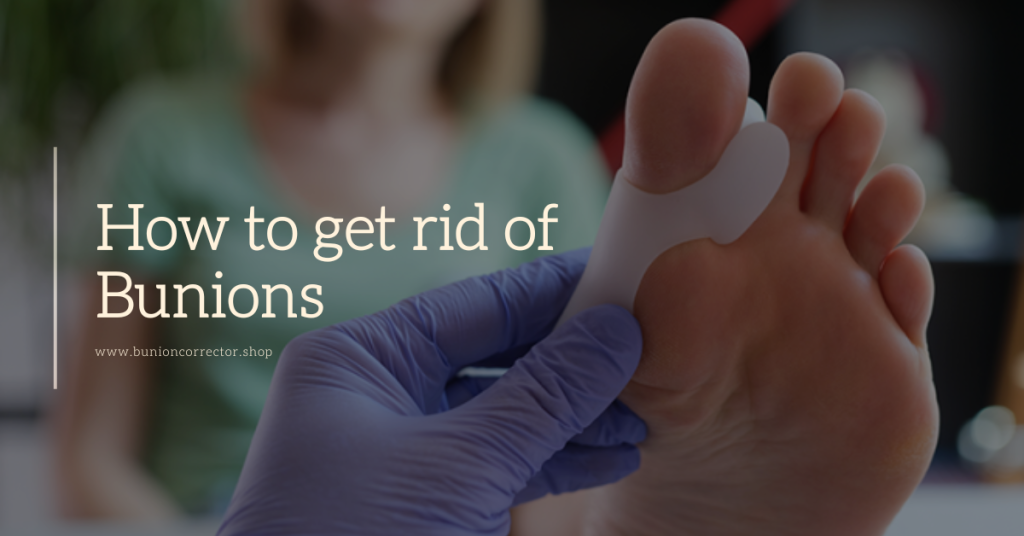Bunions can be painful and make daily activities challenging, but the good news is there are ways to manage them effectively. If you’ve ever wondered how to get rid of bunions or at least reduce the discomfort, this guide is for you. We’ll walk you through the causes, prevention tips, and, most importantly, different treatment options that can help alleviate your bunion pain. Whether you’re seeking home remedies or considering surgery, it’s essential to know your choices to make the best decision for your health.

What is a Bunion?
Understanding Bunions
A bunion is a bony bump that forms on the joint at the base of your big toe. It occurs when some of the bones in the front part of your foot move out of place, causing the tip of your big toe to pull toward the smaller toes. Over time, this misalignment causes the joint to stick out, forming the classic bunion shape.
Bunions develop gradually, and in many cases, they result from years of wearing ill-fitting shoes, such as tight or high-heeled footwear, but other factors can also cause them. It’s essential to catch bunions early before they become more serious.
What Causes Bunions?
While bunions are often associated with poor footwear choices, there are a few other factors that contribute to their development:
- Genetics – If your parents or grandparents had bunions, you may be at a higher risk of developing them.
- Foot Structure – Some people are born with foot shapes and are more likely to develop bunions.
- Arthritis – Inflammatory conditions like arthritis can increase the likelihood of bunions.
- Foot Injuries – Past injuries to the feet can lead to bunion formation.
- Improper Footwear – Shoes that are too tight, narrow, or have high heels can exacerbate bunions by putting excessive pressure on the toes.
Understanding these causes can help you make better choices in preventing bunions from developing or worsening.
Can You Get Rid of Bunions Without Surgery?
For many people, the thought of surgery is daunting. The good news is that surgery is not the only way to manage bunions. Various non-surgical treatments can reduce discomfort and slow the progression of the bunion.
- Wearing Proper Shoes
One of the easiest and most effective ways to reduce bunion pain is to wear the right shoes. Look for footwear that offers plenty of space for your toes to move freely. Shoes with a wide-toe box and low heels can significantly decrease the pressure on your bunion. Consider custom orthotics, which are specially designed to support the structure of your foot.
- Use Bunion Pads or Splints
Over-the-counter bunion pads or splints can provide relief by cushioning the bunion and helping to keep your toe in a more natural position. These devices can be worn during the day or overnight and are a great way to prevent further irritation.
- Toe Exercises
Strengthening and stretching the muscles around your toes can help reduce pain and prevent the bunion from worsening. Simple exercises like toe stretches, curls, or picking up small objects with your toes can make a big difference.
Toe Stretching Exercise:
- Sit down with your feet flat on the floor.
- Use your fingers to pull your big toe gently away from the others.
- Hold the stretch for 10-15 seconds and repeat it several times throughout the day.
- Ice Therapy
Applying ice to a bunion can help reduce inflammation and numb the pain. Try icing your bunion for 15-20 minutes several times daily, especially after standing or walking for extended periods.
- Pain Relief Medications
Over-the-counter medications like ibuprofen or acetaminophen can help manage the pain and inflammation associated with bunions. However, you must consult your doctor before starting any medication regimen, especially if you have other health conditions.
- Bunion Correctors
If you’re looking for a gentle way to correct the alignment of your toes, bunion correctors may be worth exploring. These devices are worn at night and work to realign your toes while you sleep, helping to relieve pressure on the bunion and reduce pain over time. While they may not eliminate a bunion, many people find them helpful in managing symptoms.

When is Surgery Necessary?
While non-surgical methods can offer relief for many people, there are cases where bunions may become severe enough to require surgery. If your bunion causes constant pain, restricts your movement, or interferes with your daily life, it may be time to consult a podiatrist about surgical options.
Types of Bunion Surgery
There are several types of bunion surgery, depending on the severity of your condition:
- Osteotomy – In this procedure, the surgeon cuts the bone and realigns the joint. Pins or screws may be used to keep the bone in place during the healing process.
- Exostectomy – This involves removing the bunion itself, but it’s typically done in conjunction with an osteotomy to prevent the bunion from returning.
- Arthrodesis – In severe cases, the joint may be fused to relieve pain and prevent further misalignment.
Recovery from bunion surgery varies depending on the type of surgery, but it typically involves several weeks of rest and limited weight-bearing activities. Following your doctor’s post-surgical instructions is essential to ensure proper healing.
How to Prevent Bunions
Preventing bunions before they start is the best course of action. By taking some simple steps, you can minimize your chances of developing a bunion or keep it from worsening.
- Choose the Right Footwear
Avoid shoes that are too tight, narrow, or high heels. Opt for shoes that offer support, have a wide toe box, and are made from breathable materials.
- Use Arch Supports or Orthotics
Custom orthotics can help distribute your body weight evenly across your foot, reducing pressure on your toes and preventing bunions from forming.
- Strengthen Your Feet
Regular foot exercises, like toe stretches and foot rolls, can keep your feet strong and flexible. Strengthening the muscles around your feet helps support the joints and bones, reducing the risk of bunions.
- Keep an Eye on Your Feet
Regularly check your feet for any signs of changes. If you notice any redness, swelling, or the early formation of a bunion, immediately change your footwear or use over-the-counter remedies.
Conclusion
While bunions can be painful and frustrating, they don’t have to take over your life. By wearing the right shoes, using corrective devices, and maintaining a healthy foot care routine, you can manage your bunion pain and prevent it from worsening. If you find that non-surgical methods aren’t providing enough relief, don’t hesitate to consult a healthcare professional to explore surgical options.